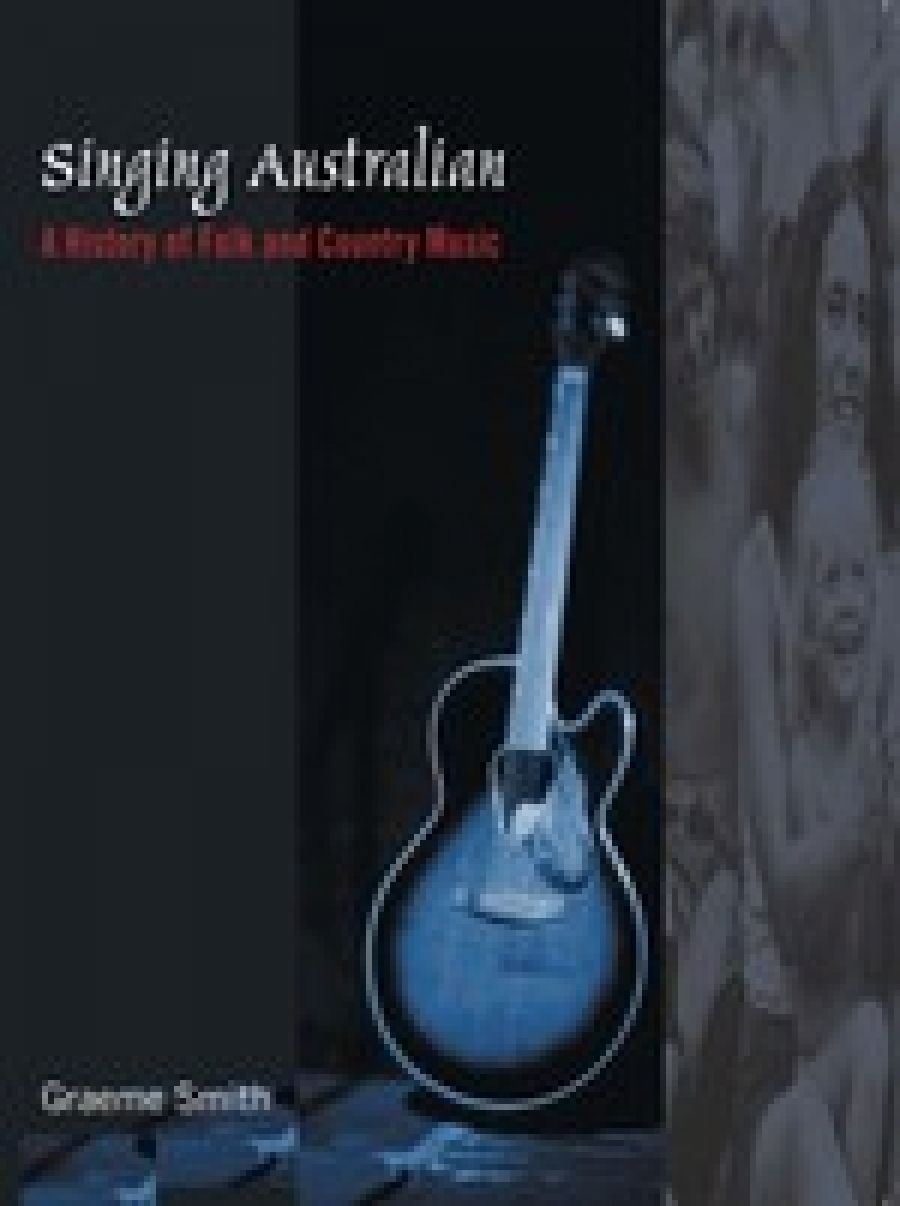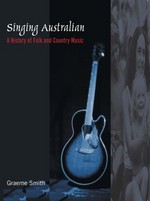
- Free Article: No
- Contents Category: Australian History
- Review Article: Yes
- Article Title: New territories
- Online Only: No
- Custom Highlight Text:
Tracing both the frisson between city and outback realities and the impact of politics on the music scene, Singing Australian is not only about the intersections between folk and country music and their appropriations from a raft of other genres; it is also an insightful chronicle of Australia’s struggle for identity as a post-colonial society, the search for nationhood through song and an expansive panorama of this country’s social history.
- Book 1 Title: Singing Australian
- Book 1 Subtitle: A History of Folk and Country Music
- Book 1 Biblio: Pluto Press, $35.95 pb, 265 pp
- Book 1 Cover Small (400 x 600):

When Smith addresses Slim Dusty’s well-publicised state funeral, the concept of world music as sonic travel, the quaint Irish-didgeridoo musical fusion due in part to the equivalencies between the Irish Bronze Age trumpet and the didgeridoo, or the description of Paul Kelly as a troubadour of our time, his chatty and anecdotal discoveries all pique interest. Apparently, Kelly was first inspired to write archetypal Australian songs after seeing Midnight Oil perform in Paris; he liked the fact he could relate to the Australiana references that others around him could not.
Folk and country music genres are scrutinised from multiple angles, and Smith outlines numerous processes of musical evolution, including some that have been stirred by governmental decision. Whitlam’s multicultural policies, which were sustained through the Hawke and Keating governments, engendered the expression of non-British cultures, leading to the phenomenon of polyethnic groups such as Sirocco and Gondwanaland, and a profusion of world-music ensembles now aligned to alternative venues, such as Melbourne’s Boite and Sydney’s Pena. These cross-cultural specialties are now a part of a swathe of styles involving pop, rock, gospel, blues, jazz, and even hip hop, which have permeated folk and country genres. This infiltration is a significant manifestation of the dissolving lines of demarcation between various kinds of music.
Like many who live urban lives, I too have been dismissive of country music. Smith argues that ‘people choose a music not merely because it talks about their life but because it talks like their life’ – an oversimplification perhaps, and one that contradicts a later argument that ‘the phenomenon of world music has enabled individuals to define their identity by cultures other than their own’. Much the same can be said about the citation of the cultural theorist Bourdieu’s viewpoint that ‘nothing more clearly affirms one’s class than tastes in music’, but it does serve to bolster the argument that country music is firmly associated with the working classes. Surveys confirm that this medium is favoured by the population who are distributed in a ‘hinterland where the power of metropolitan taste recedes’.
In a particularly absorbing section, Smith forays into an analysis of John Williamson’s strategically stretched Aussie accent in the iconic True Blue, and interrogates Lee Kernaghan’s and Kasey Chambers’ success. The latter’s songs are a confusing mix of Australian content delivered in a psuedo-Americanised twang and the feathery light, breathy girl incantation of late-1990s pop. Her suite of lyrics espouses traditional concerns such as family and faithful relationships, but in Nullarbor Song, with its dislocating insecurities (‘swallowing the sky I feel no anger, I feel no shame, I feel no reason to cry’), she shifts the form into new territories. Her songs foreground the aridity of the Nullarbor rather than the cow-scattered landscapes more commonly enshrined in Dusty’s music.
While Kernaghan’s songs are anthems to ‘mateship’ and white-settler dominance, in one hit he flagrantly laments that the audience ‘may not be politically correct – but, it’s good to know there’s a few of us left’. Kelly conjures folksy authenticity by switching effortlessly between the sung and spoken voice. In Maralinga, he assumes the lingo of an Aboriginal man ‘radiation-blinded’ at an infamous nuclear-testing site.
Folk music’s down-to-earth engagement with ordinary life resonates within Smith’s prose. For a musicologist, his words often spring from the arena of lively musical journalism. Expressions such as ‘the kick-ass style of her honky-tonk repertoire’ in referring to Kasey Chambers and ‘the dread-locked rootsie, neo-hippie John Butler’ make this scholarly work, brimming with meticulously researched ideas, an accessible read. This is a vital, pioneering work that will create awareness about the synergies between nationhood and popular trends in contemporary music. Many fascinating and perplexing topics are identified, including the morality of cultural appropriation. If there is a weakness, it lies in the attenuated debate about important issues.


Comments powered by CComment